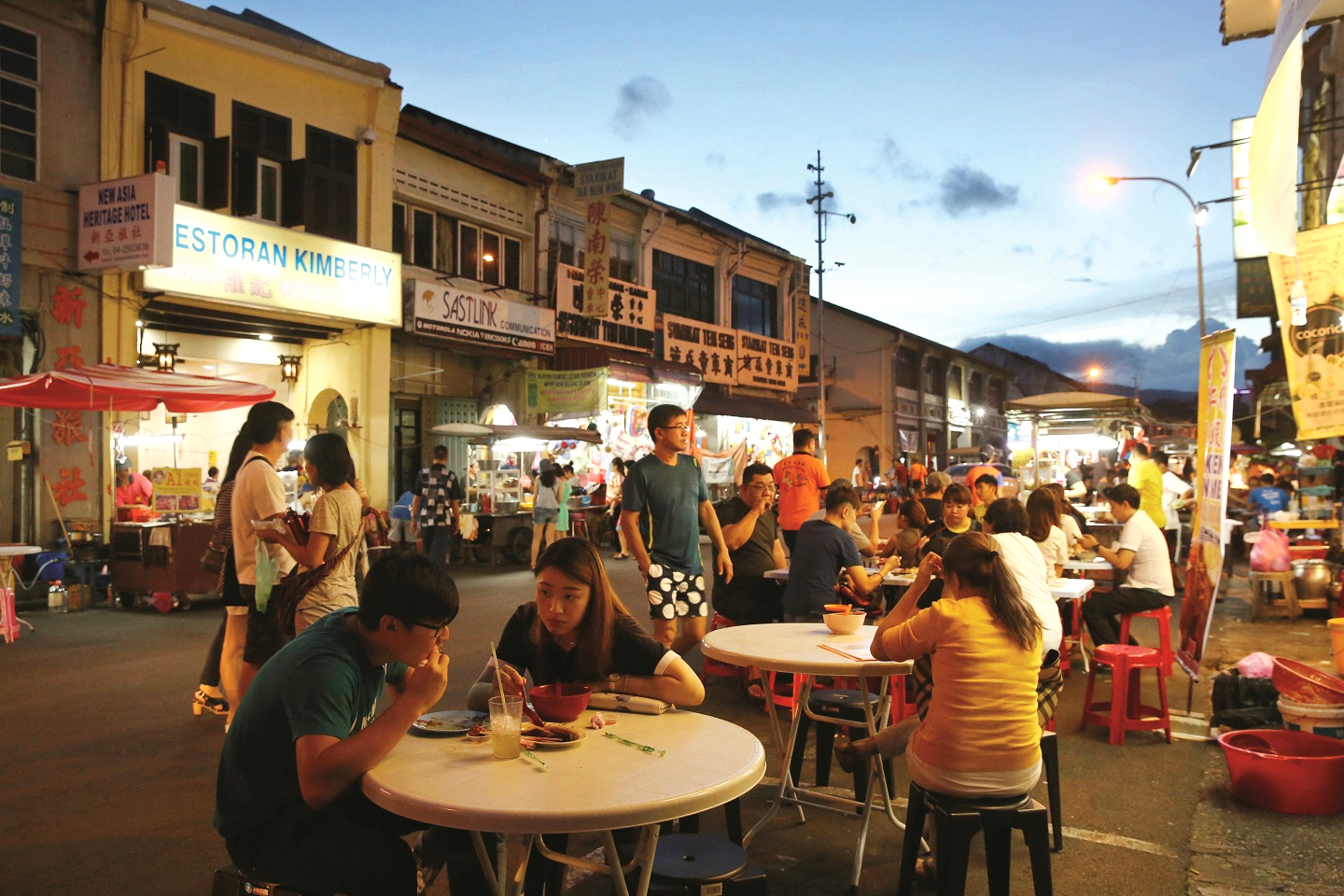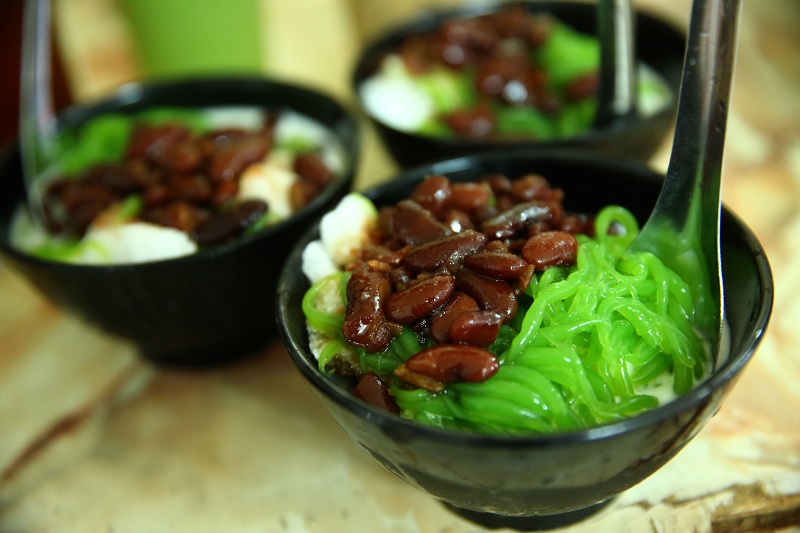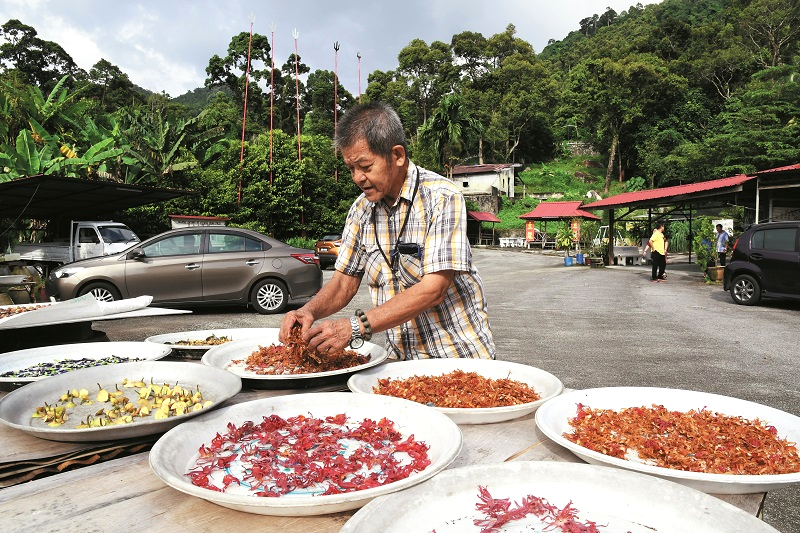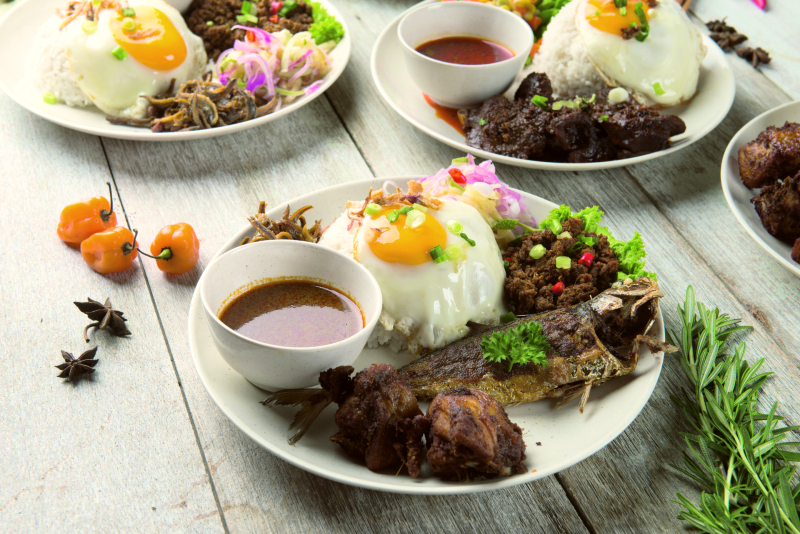
Food is often the only language of love in Asian families, where love is not demonstrated but implied (Photo: Sam Fong/The Edge)
Nothing gets the Malaysian salivating — or frothing with rage — more quickly than discussing the relative merits of famous local eateries. Global Malaysians, like those in Chicago, pick at food memories like scabs; it is painful to remember the food of home, but an endless delight to pluck at memories filtered through the lens of nostalgia.
Remembering food carts where cendol was sold for a few sen is a post-dinner sport and Malaysians take it online when the community is dispersed. A quick glance at the Global Malaysian Network (GMN) shows a recipe for roasted chicken feet with Coca-Cola(!) and pictures of a 40-year-old No-Name-Fish-Head-Curry-stall in KL that is worth a visit.
What else should we expect from a country that says hello with “Sudah makan?”?
Introducing the Fay Khoo Award for Food and Drink Writing in Malaysia was a brilliant idea. This year’s winners were announced on Nov 22, in conjunction with the launch of an anthology of delicious food writing at the George Town Literary Festival, which ran from Nov 21 to 24.
20160905_peo_penang_food_37_sam.jpg

The thing is, it feels natural to write from the heart about the gastronomic treasures so abundant in this country. Even Isabella Bird, writing in 1883 about British Malaya, was in no way immune to nature’s bounty in the tropics, despite her rather jaundiced colonial eye enumerating the many character flaws of the local population. In her pages, even the ubiquitous nutmeg blooms like an epiphany:
“I saw for the first time the nutmeg growing in perfection. It was a great delight, as is the first sight of any tree or flower well known from description. It is a beautiful tree, from forty to fifty feet high when full grown, with shining foliage, somewhat resembling that of the bay, and its fruit looks like a very large nectarine. One fully ripe was gathered for me. It had opened, and revealed the nutmeg with its dark brown shell showing through its crimson reticulated envelope of mace, the whole lying in a bed of pure white, a beautiful object.” (The Golden Chersonese and the Way Thither, 1883)
Paul Theroux, writing almost a hundred years after Bird, is also prone to descriptions of his Asian travelling companions as caricatures from a colonial handbook. But when he describes a dining car during his railway journey through Malaysia, the writing is atmospheric, filled with the stickiness of tables and the clip-clop of wooden clogs on unsteady aisles:
“For lunch I had my old favorite, mee-hoon soup with the partly poached egg whisked in among the Chinese cabbage, meat scraps, prawn slices, bean sprouts, rice noodles, and a number of other atomized ingredients that thicken it to the point where it can be eaten with chopsticks. There were no tables in the dining car, which was a noodles stall; there were sticky counters and stools, and Chinese sitting elbow to elbow, shaking soy sauce over their noodles and calling out to the waiters, little boys in red clogs, carrying beer bottles on tin trays.” (The Great Railway Bazaar, 1975)
20181028_pla_ghee_hup_nutmeg_factory_balik_pulau_penang_15_lyy_tep.jpg

Food is often the only language of love in Asian families, where love is not demonstrated but implied. The smell of a much beloved childhood dish comforts the soul of an anguished child in a place medicine is unable to reach. Perhaps that is why, in Shirley Geok-lin Lim’s memoir, the heartbreak of homesickness while shopping in American supermarkets is really more about the loss of the communal kitchen:
“… there was not a single scent of ripeness, a welcoming softness to suggest salivary delight, a tang whether sharp or sour promising kitchen smells and steaming dishes. The bananas were hard greenish yellow; onions in three-pound nylon sacks appeared scrubbed clean. If there was nourishing sweetness in all this warehouse of food, one would have to tear through unyielding metal, thick polyvinyl, pounds of cardboard … For the first year in the United States, I was always hungry, a hunger that rebelled against American food.” (Among The White Moonfaces, 1996)
Beth Yahp’s recent memoir of food, family and home — which is as much about political activism as it is about familial community — keeps returning to the bonds forged over food:
“Above the table we are leaning away from each other, below it our thighs are glued. Jing’s relaxed tonight, not trying to win over any flagging allegiances … not in political salesman mode. I gently blow my tea’s bubbles away from its surface, sip at the hot sweet brew: tea dregs, stewed orange, swirled in condensed milk and a spoonful of sugar, then time to tarik, ‘pull’ it from one huge metallic mug to another, then pour it frothing into my waiting glass.” (Eat First Talk Later, 2015)
I have many food stories: of a Piscean meal under the Andalusian mountains, where the sky was a celestial lightshow; drinking homemade wine in remote Sikkim, served by a toothless grandmother with the widest grin; sharing candy with two children in Bhutan who were honouring their ancestral tsa-tsas (small stupas) on a hillside; and sharing a hotpot in Chengdu with Chinese colleagues who did not have the vocabulary to translate into English what we were eating. The act of feeding and feasting needs no language as we all celebrate in one of the deepest and most essential joys of being alive.
101337490_l.jpg

Some of my favourite meals in Malaysia are from Pujobari in Port Dickson, where Malaysian Bengalis meet every Deepavali to celebrate Kali Puja as well as their appetites. So, in 2018, I titled my entry for the Fay Khoo Award Paet Puja: How Malaysian-Bengalis Worship the Stomach and I wrote from deep within the recesses of a diasporic longing for community:
“Mutthamma, the mother of the present caretaker, made the best egg curry in all of Malaysia (and on this planet!) and it was Mutthamma’s Mutta Curry, a fragrant dish of eggs in a spicy ginger-cumin-tomato base, that would fill our hearts and tummies after the long drive. This alliterative marvel tripped off our tongues and brought us all straight here, silencing the children who hankered for the fried chicken and mee goreng at the highway rest-stops, for there was no stopping for makan anywhere else, hurry up lah, Mutthamma’s mutta curry will finish if we are late.”
I did not expect to win the Fay Khoo Award last year. I was seated on the stage, waiting for the winner to be announced so that I could dash out and meet the motorcycle driver waiting to whisk me to another event. Instead, I saw the gracious Bettina Chua Abdullah walking to the mike with an envelope, Datin Renee Khoo announcing my name and, magically, Jo Kukathas, someone I admire deeply from theatre and Instant Café, breathing my words into life. My husband beamed through it all.
It was a magical evening, filled with wonderful food writing. When Cheah Soon Seng’s The Banker’s Dinner was read out, it was as if we were all seated at that familiar late-night mamak stall.
We all have stories about our memories of food, so often tied to our memories of love. So begin; start writing what you love. There is an abundance of Malaysian stories, still untold. There is no reason to wait.
This article first appeared on Nov 11, 2019 in The Edge Malaysia.


